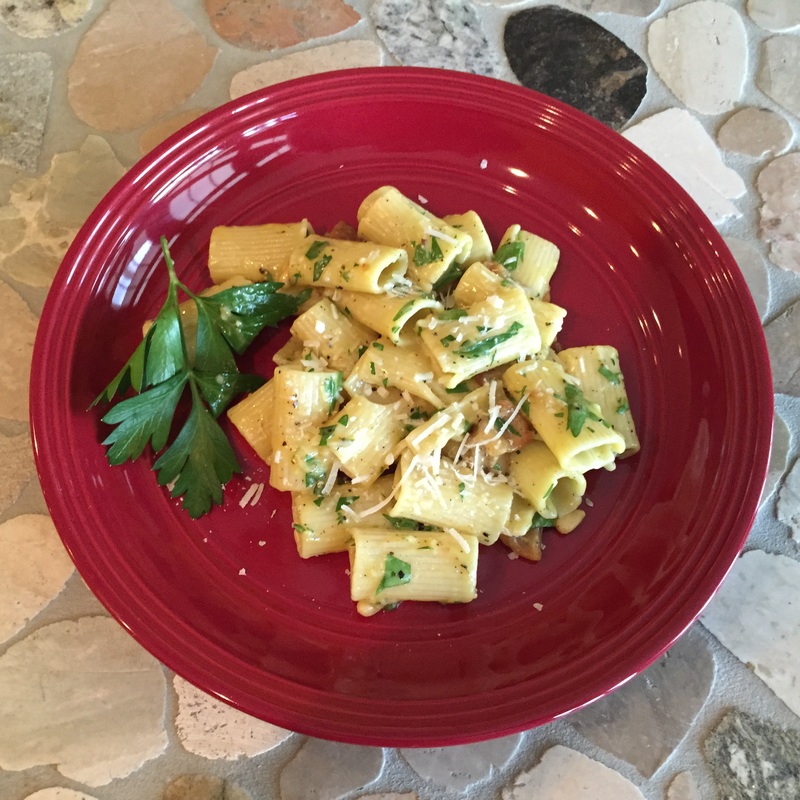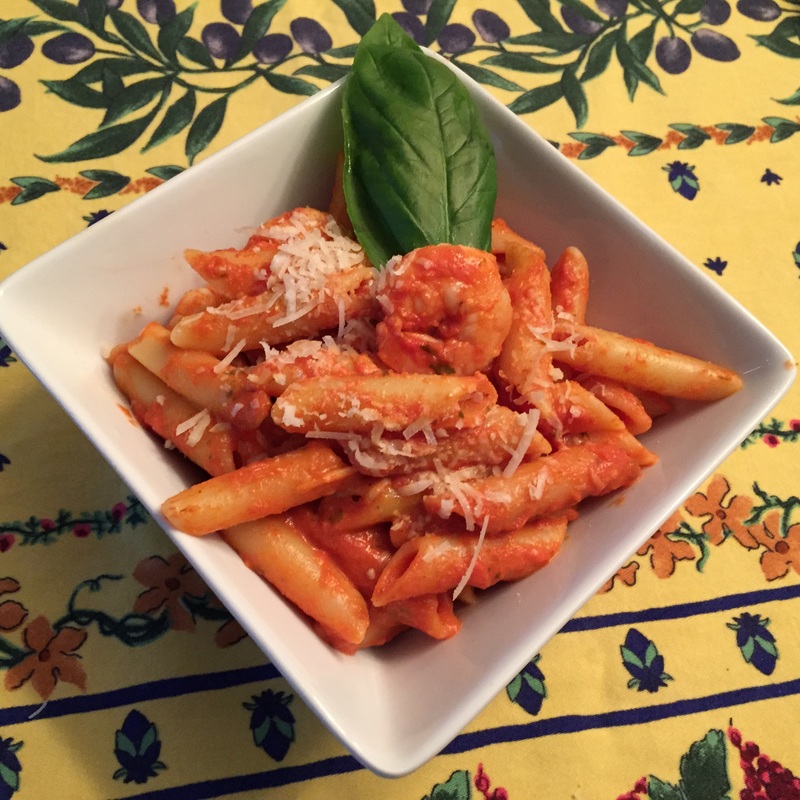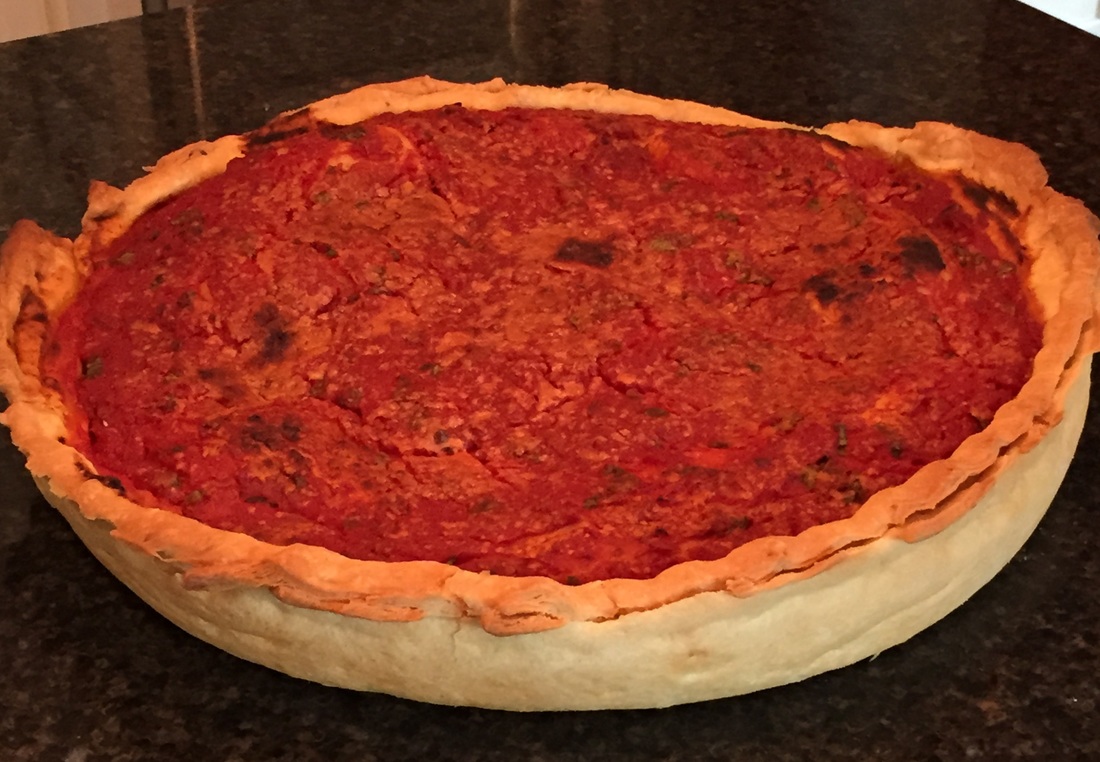| From the beginning, this web site has been about preparing simple and delicious foods Italian style. In my second blog – in January 2014 – I further explained that my primary focus would be “classic” Italian foods – that is, foods originating in the Italy of my grandparents and their ancestors, or 19th century Italy. While I will be the first to admit I have drifted from this focus on occasion, historic authenticity is still very important to me – not because I think those recipes are inherently better, but because I wish to preserve their authenticity. Writing these blogs, however, has helped me appreciate other foods that were unknown 100 years ago in Italy, but are, nonetheless, arguably Italian. Three foods come immediately to mind: Pasta Carbonara, Penne alla Vodka, and Chicago Deep Dish Pizza. The first was created for Americans, the second popularized by Americans, and the last created by Italians in America. Looking for a common denominator, I selected American – Italian Foods as the theme for this blog. Thanks to my long-time friend, business colleague, and fellow hobby chef, David in Austin, I recently learned the origin of Pasta Carbonara. As reported by Marcella Hazan, celebrated chef and author, Pasta Carbonara dates back to the end of World War II when American soldiers living in and around Rome brought bacon and eggs to local families and requested they use them in a pasta sauce. Ms. Hazan suggests the dish came to be known as carbonara because of the earthy flavors of the smoked pork. (Carbonara translates roughly to carbon or charcoal.) In Italy today, pasta carbonara is most frequently prepared with pancetta or salted pork jowl, both being unsmoked meats. As Chef Hazan notes, pork jowl and pancetta are “so much sweeter than bacon, whose smoky accents tend to weary the palate.” I tasted Pasta Carbonara for the first time many years ago at a family reunion. Two cousins (one a trained chef, and both exceptionally talented in the kitchen) prepared the dish using their own recipe – the recipe posted on this site. As you can see, their recipe calls for pancetta. I recommend it highly. Penne alla Vodka was essentially unknown outside Italian households until it won a national recipe contest in Italy in the 1970s. Now it is a familiar menu item in Italian restaurants everywhere. Penne alla Vodka begins with a sauce of tomatoes, onions, garlic, herbs, heavy cream, and of course, vodka. The alcohol in the vodka releases flavor compounds in the tomatoes that are alcohol soluble, but not water soluble. (In reality, wine or any other alcoholic beverage could be used as a substitute for the vodka, but that would spoil all the fun! Plus, vodka adds limited extra flavors to the sauce.) The alcohol also helps to emulsify the cream. The sauce is often blended or pureed to make it smooth and silky before being served with penne pasta. The recipe posted here is my version and uses what has become my favorite tomato product – 6 IN 1 brand All Purpose Ground Tomatoes in Extra Heavy Puree (if your grocer doesn't carry them, they are available online at escalon.net). | Pasta Carbonara. Penne alla Vodka. Chicago-Style Deep Dish Pizza. |
My son, David, created the recipe for Chicago-Style Deep Dish Pizza posted here. While researching recipes for this local delicacy, David quickly realized that all of these restaurants consider their recipes for both the dough and the sauce highly proprietary and have successfully kept the recipes safe from internet leaks. David was, therefore, relegated to various suggestions from self-proclaimed “experts” as well as his own experience to create this recipe. It should also be noted that there are two camps when it comes to Chicago-style pizza. David reports, “Though most Chicagoans will agree on the basic concept of the Chicago-style (or deep dish) pizza, there is a serious dispute as to the preparation of the pie. Those in the Uno’s, Malnati’s, and Gino's East camps will argue that a deep dish pizza consists of a crust, mozzarella cheese and meat layers, sauce, and all topped with grated Parmesan cheese. Those in the Nancy’s and Giordano's camps, however, will argue that deep dish pizza has a layer of dough between the cheese-meat layers and the sauce. On a lesser note, the Uno's camp uses a doughy corn meal crust resembling more of a traditional pizza crust, whereas the Giordano's camp uses a buttery flaky crust more akin to a pie crust.” This dispute, in fact, has even infiltrated our own household. As you will see in his recipe, David prefers the two-crust version, whereas I prefer the single crust.
I will submit that the underlying message to all of this is clear. Whether we consider these foods to be Historic Italian or American – Italian (or anything else!) is much less important than the fact that they are all memorably delicious creations. I know that after you’ve tried one or more, you’ll be back for more!
Buon appetito.



 RSS Feed
RSS Feed